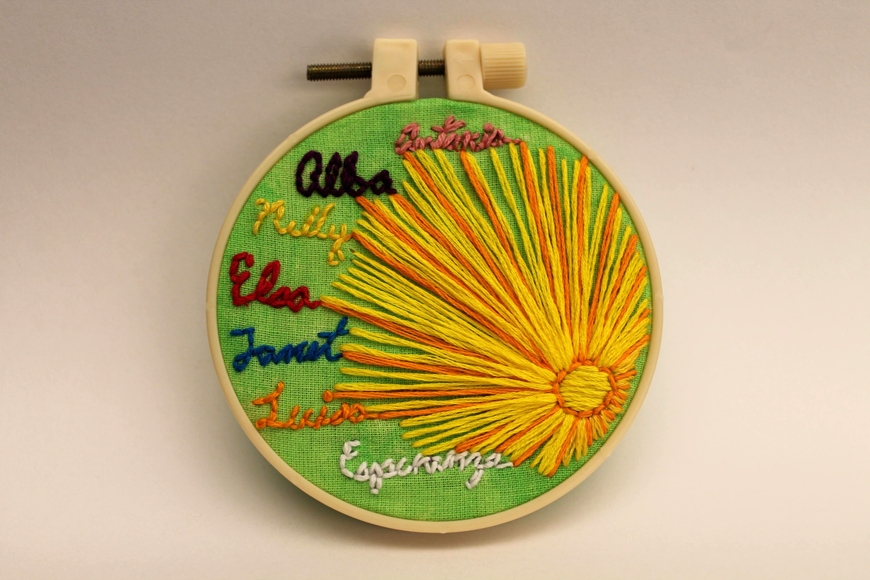PhD student helps migrant women tell their stories of human rights abuses through art
In the Summer of 2021, Professor Osiris Gómez and graduate student Olga Salazar worked with Los Angeles-based NGO, Comunidades Indígenas en Liderazgo (CIELO), to develop a program to help understand the lives of migrants, specifically undocumented, indigenous women from Latin America, through testimonies. CIELO fights for social justice in Latin American Indigenous and Migrant communities of Los Angeles, with a focus on different forms of violence and discrimination. Through funding from the Human Rights Initiative and support of the Human Rights Lab, the workshop, Testimonies of Hope, was developed. In the Project Proposal Gomez and Salazar write that “while promoting emotional healing and helping survivors get access to professional help is essential, we believe it is also pivotal to help survivors finding the means to express and articulate their experiences and suffering so that these human rights violations are documented.”
Olga Salazar is a graduate student in the Department of Spanish and Portuguese Studies, who has done substantial research on: the human rights crisis in Mexico, violence faced by migrants, and gender based violence. Her knowledge of some of the atrocities that migrant women face during and after their journeys to the U.S. was essential in helping to build a workshop that allowed these women to express their experiences and bring awareness to their struggles. Salazar states that “considering that a lot of indigenous people are also migrants and many of them are undocumented, the fact that the state fails to recognize their ethnicity, culture and language means that as a country we are not making enough [of an effort] to recognize the human rights of everyone.”
Both Salazar and Professor Gómez mainly study literature, art and cultural expressions in Latin America, so rather than focusing the workshop solely on dialogue, the two created an artistic workshop in which the participants used collages, photos, embroidery, drawings, food and other mediums to dive into their personal stories. Salazar was involved in each and every aspect of the project. She began by creating a literature review about Latin American migration to the US which included topics such as why women migrate and the danger and human rights violations that they face. Salazar conducted a similar review to explore art therapy workshops that have been carried out by various organizations about different issues to inform the development of their workshops.
Salazar also developed several sessions for the workshop, and led and participated in all eight. She noted the importance of leading the workshops herself, rather than Professor Gómez: “it was a workshop for only women and the figure of a male could have disrupted the idea of a safe space.” Salazar worked hard to ensure that the participants felt they were in a safe space. While recounting the experience, she outlined how a significant portion of the sessions were dedicated to talk about the present and getting to know the women and their comforts in order to create a safe space for deeper conversations and reflections.

In a country where indigenous and migrant womens’ voices have largely been ignored, it can be hard for them to speak on their experiences. However, this project taught Salazar that through different forms of expression, individuals can learn more about different communities and people. For example, “sewing as a group is empowering and sometimes is a better form of communication than words. I say this because… basically [every part of sewing] can have a meaning, can give you a hint to what the other person is feeling and it also enables you to connect with others even in moments in which there is silence and when the voice fails to articulate our thoughts.” The workshop further helped to advance human rights, their defenders, and survivors through art and cultural expression, by uplifting survivors' voices and stories and creating a program that could be replicated by other organizations and communities.
During the 20th anniversary symposium of the Human Rights Program in November of 2021, Professor Lisa Hilbink introduced this initiative and several others by stating that “art has a complex relationship with human rights; it can be used to drive divisions among people, but it is also central to advocacy, memory and reconciliation.” Salazar’s work on this Human Rights Lab project exemplifies this, by elevating narratives of human rights abuses and impunity and working to change the way that victims tell their stories.


